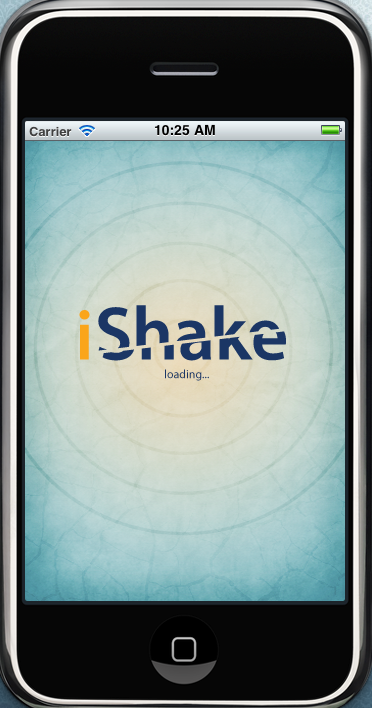21 December 2010
Earthquake monitoring with smartphones and websites
Posted by mohi

Your phone, as a seismic recording device! A new smartphone app, developed by UC Berkeley scientists, can tell if phones across a broad area are shaking vigorously, indicating a likely earthquake.
Want to contribute to earthquake science? Your smartphone can be an earthquake measuring device. Researchers at the University of California, Berkeley have been developing a smartphone application that uses the phone to measure acceleration during an earthquake and report that data to researchers for processing. Shideh Dashti of the University of California Berkeley reported on initial tests of the system in Fall Meeting’s session S51E: Engaging Citizens In the Collection of Earthquake Observations Using the Internet II.
Ground motion instruments can detect earthquake location and strength, but even in well monitored earthquake prone areas there are many more smartphone users than there are ground motion instruments. A smartphone-based monitoring system could supplement data from ground instruments, improving the resolution and accuracy of maps of earthquake intensity.
Through laboratory tests of a phone on a table in a shaking room, researchers found that smartphones equipped with the app could accurately sense vigorous jostles. The phone does have to be resting on something for the application to work—the phone can’t be being carried around in someone’s pocket while the quake happens. Data on the rapid movements and the location of the smartphone is then transmitted to the researchers’ central computers, which can process the data and determine the vigor of the shaking and whether many phones were shaking at the same time in a particular location. This could be used to provide a map of the intensity of shaking over an area, helping earthquake researchers and responders. In particular, the technique could prove useful in areas that are sparsely monitored by ground motion instruments.
Their tests also showed that researchers could easily tell when a phone suddenly fell off a table—there was a sudden spike in acceleration that was clearly different from normal acceleration changes due to shaking during an earthquake.
Other projects also rely on citizen scientists to report earthquake observations. For instance, the US Geological Survey “Did You Feel It?” program, described by Survey scientist David Wald, allows people to report, through a website, how much shaking they felt during an earthquake. People have been participating eagerly. “When an earthquake shakes five million people, you’ve pretty much got their attention,” Wald said. The program, which has been operating since 1999, has gotten more than 1.9 million entries. This is a huge number of observations, and it enables scientists to create maps of earthquake intensity.
But because human impressions are not an objective measure of the intensity of shaking, a more objective source, such as the smartphone-based system which detects motion independent of user input, could fill in some gaps in earthquake monitoring data. And it’s a fun way to for citizens to use their smartphones and participate in science.
Another way of gathering data on earthquake occurrence and intensity is simply by tracking traffic to websites with earthquake information. As soon as people feel an earthquake, many turn to the World Wide Web for information on what just happened. Remy Bossu of the European Mediterranean Seismological Centre in France found that during more than 150 small earthquakes, the number of site visits to the centre’s website suddenly jumped when an earthquake occurred. Automatic statistical analysis the IP address-based locations of those visiting the site provides some information on the location of an earthquake within minutes of the event. Bossu suggested that analyzing website traffic could therefore be an inexpensive way to gather some limited information about the intensity of shaking in various locations and could help in response efforts.
–Ernie Tretkoff is a science writer for AGU










 GeoSpace is a blog on Earth and space science, managed by AGU’s Public Information staff. The blog features posts by AGU writers and guest contributors on all sorts of relevant science topics, but with a focus on new research and geo and space sciences-related stories that are currently in the news.
GeoSpace is a blog on Earth and space science, managed by AGU’s Public Information staff. The blog features posts by AGU writers and guest contributors on all sorts of relevant science topics, but with a focus on new research and geo and space sciences-related stories that are currently in the news.